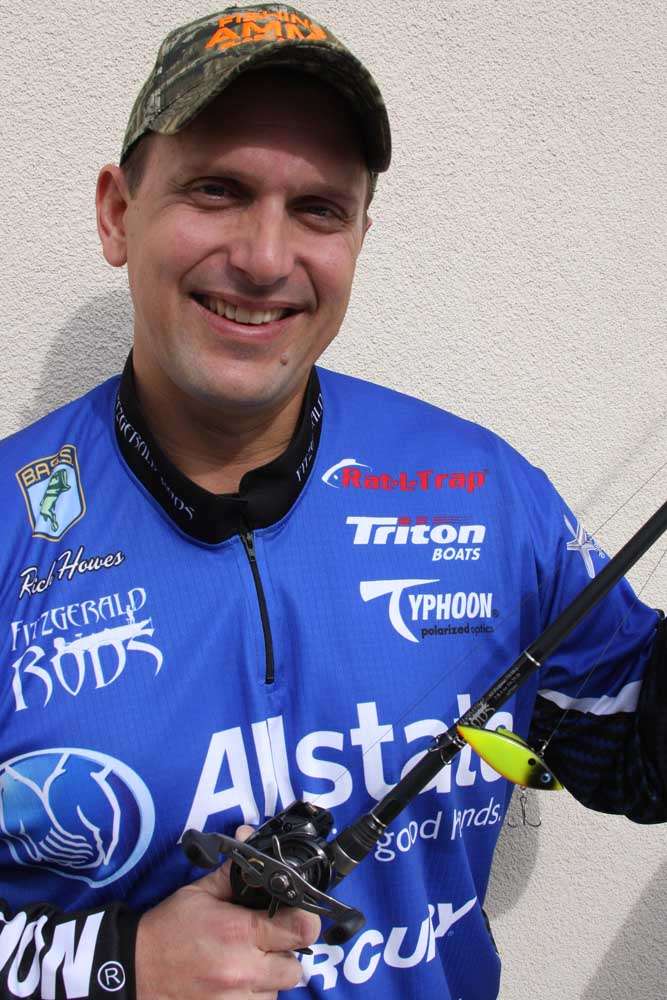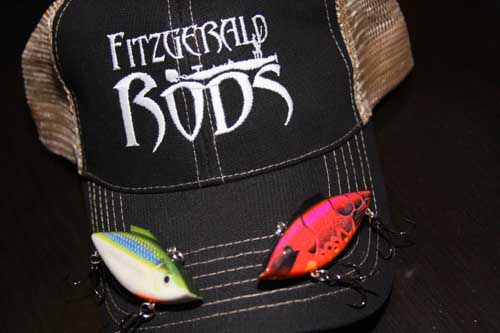
Rich Howes is a Florida bass angler with a reputation for pitching and punching heavy vegetation. It’s a money method for him and the technique he used to win the 2013 Southern Open on the Kissimmee Chain of Lakes. His big Fitzgerald Mat Flippin’ rod also punched his ticket to the 2014 GEICO Bassmaster Classic on Lake Guntersville.
But Howes is no one-trick pony. He may use the pitching and punching techniques to pull bass from the heaviest cover, but he prefers other methods for locating bass and for catching them when they’re not in the thick stuff.
“My favorite search bait is the Bill Lewis Lures Rat-L-Trap,” Howes says. “It covers water quickly and efficiently, and with different retrieves it’s effective all through the water column.”
The Rat-L-Trap is probably the most ubiquitous lure in all of bass fishing. Though it wasn’t the first lipless, vibrating crankbait on the market, it’s certainly the best known … and perhaps the most inefficiently used.
“Everybody knows you can sometimes catch bass on a Rat-L-Trap by just throwing it out and winding it back in,” Howes says, “but there’s a lot more to it than that and a lot of different ways to present the bait that are more effective under certain conditions.”
Rods and Reel
As with most things fishing, getting the most out of the bait starts with the right equipment. Howes uses just one reel for his ‘Trap fishing, but chooses between two rods (depending upon the cover he’s fishing and the line he’s using) and the three major types of fishing line (fluorocarbon, braid and monofilament).
“I do all my lipless crankbait fishing with a Lew’s BB-1 Pro Series Speed Spool casting reel with a 7.1:1 gear ratio,” Howes says. “The high speed lets me move the bait when I need to, but I can still slow down when I have to.”
He pairs the BB-1 with a Fitzgerald Rods All Purpose 7-foot medium heavy or 7-foot heavy model casting rod, depending on the cover he’s fishing.
“I like the medium-heavy rod for most of my Rat-L-Trap fishing, especially when the cover’s not very heavy and I’m using fluorocarbon or monofilament line. If I’m fishing heavy grass and need to pull the bait off cover for a reaction strike, I’ll use the heavy-action model with heavy fluorocarbon or braid.”
Line
Howes’ line selection is based on several factors, including water clarity, cover density, the depth he wants the bait to run, how far he wants to cast and how well the bass are eating his bait.
Basically, the dirtier the water or the heavier the cover, the heavier the line he’ll use. His go-to line is 17-pound-test fluorocarbon, and it handles the bulk of his lipless crankbait fishing. He scales up or down to accomplish different presentation goals.
“If the cover’s heavy, I’ll use heavier line,” he explains, “and if the cover is sparse or I need to make a long cast in clear water I’ll go lighter. I’ll also go to heavier line if I want to keep the bait higher in the water column. Monofilament is particularly good for this. Heavy mono will really keep your bait up. It’s also good when the bass are not taking the bait very well — almost slapping at it. The stretch in mono seems to help in getting those fish hooked.”
Retrieves
There’s probably no “wrong” way to fish a lipless crankbait. Over the decades, bass have fallen to every cadence conceived by man, from a blistering troll to deadsticking. Usually, though, something in between will be most effective.
“I have three basic retrieves that I like to use with the Rat-L-Trap,” Howes says. “The first two — “steady” and “yo-yo” — are pretty standard and self-explanatory, but the third has helped me a catch a lot of bass others miss and won me a lot of money.”
The steady retrieve is what made the Rat-L-Trap famous. You throw it out. You wind it in. The lure does the rest. The side-to-side shimmy and rattles inside the bait are just too much for some bass to resist. The trick is finding the right speed, and it can vary from fast-as-you-can speed cranking with a high-speed reel and your rod tip held high, to a virtual crawl. Experiment until you find what works.

Yo-yoing is particularly effective for those bass that want a bait that’s falling. You cast the lipless crankbait out, crank it a few quick turns or sharply lift your rod tip fast enough to feel the bait vibrate, then allow it to fall back down on a semi-slack line. You can expect most strikes to come as the bait falls. Again, cadence can be everything.
Howes’ most lucrative retrieve is one he calls “worming the ‘Trap,” and for a bait sporting a pair of Mustad Triple Grip treble hooks, it seems almost counter-intuitive.
“I cast the bait out and let it fall to the bottom, just like I’m fishing a Texas-rigged worm,” Howes says. “If I don’t get a strike on the fall, I’ll lift the bait sharply (you want to feel the vibration of the lure) about three feet off the bottom and let it flutter back down. Most strikes come on the fall.”
For Howes, this retrieve is best from late winter through the pre-spawn, when water temperatures run from 40 to 55 degrees. “After that, a faster retrieve is usually more effective.”
When choosing a bait for “worming the ‘Trap,” Howes likes a 1/2-ounce model for depths 10 feet or less and a 3/4-ounce model for deeper water. He’ll even use this retrieve in vegetation, but likes a lighter Rat-L-Trap then (1/4-ounce) so it doesn’t get mired in the grass.
Takeaways
“The Rat-L-Trap is a great bait, and it’s a mistake to rely on just one retrieve when fishing it,” Howes adds. “It’s a lot more versatile than that. I always have one tied on in my boat, and I’m always trying and learning new ways to fish it.”
Editor’s Note: Rich Howes is using his Bassmaster Classic appearance as an opportunity to support Fishing for the Kids and The Paley Foundation, organizations dedicated to helping children born with limb deficiencies. If you’d like to support the cause, you can make a donation or pledge an amount based on how many bass Rich weighs in at the Classic.





